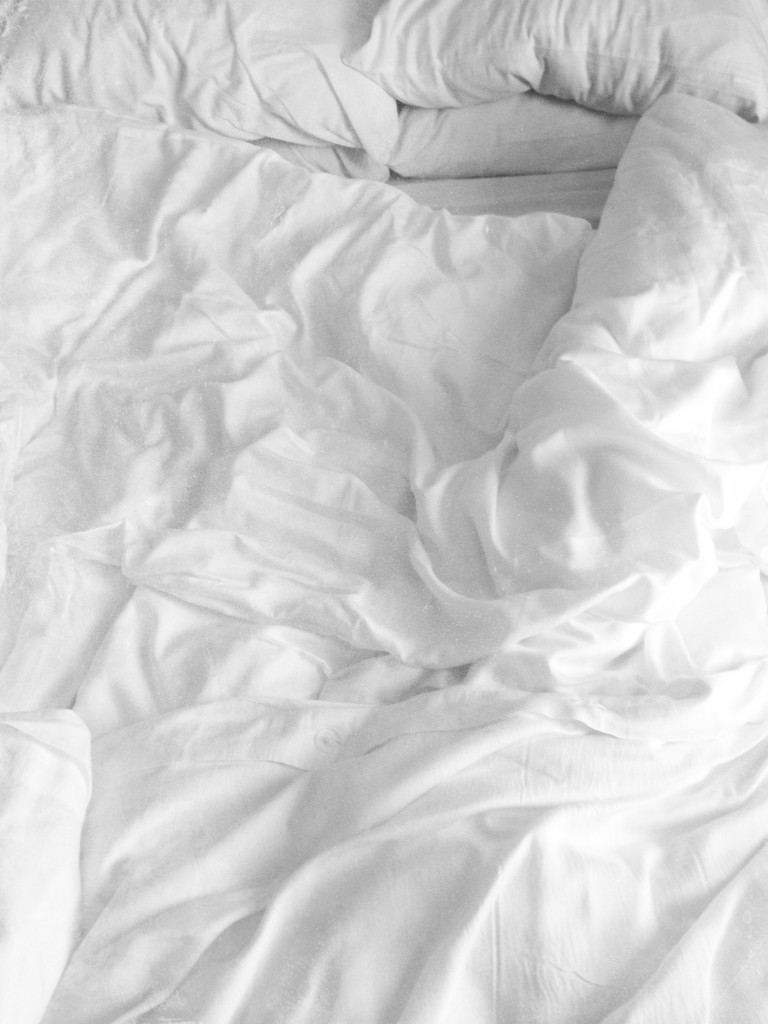My friend and mentor Lilo Raymond died a few years ago. Lilo was a wonderful photographer with a wonderful eye, who fled from the Nazis as a youth and ended up settled in a small Hudson River village. Probably Lilo’s most famous photos are of pillows and unmade beds—so this iPhone shot of my empty bed taken in my hotel room on Monhegan Island, Maine should be seen as homage to Lilo.

Phyllis describes meeting Lilo for the first time as an “encounter with a force of nature,” which is apt enough. I truly miss Lilo.
Regarding unmade beds, the question is always what was in them before they transitioned into the unmade state. Lilo’s photos manage to convey graphic compositional perfection with the suggestion of rumpled love-making, adding the human touch to inanimate objects.
But I’ve also seen one of her photos licensed to a programming text book, with the caption, “An unmade bed is like an uninitialized variable, you never know what you’ll find in it.” So there is a universality to these images that belie the modest apparent subject matter.
In some ways, the beds, tangled sheets, and curtains in front of stark windows that form Lilo’s images make up the “day material,” to use Freud’s term, that can be used as a projective device for the deeper material lying below the conscious that bubbles up in dreams. In other words, there is more to Lilo’s imagery than meets the eye.